Toppan Printing Co., Ltd. (hereafter Toppan Printing; head office: Chiyoda Ward, Tokyo; President & Representative Director: Shingo Kaneko) produces digital recreations of various pieces of cultural heritage and provides digital cultural heritage as a tourism resource that people can be proud of.
As part of the Japanese Village Restoration Project by Virtual Reality (*1) undertaken by the Thai-Japanese Association (Bangkok, Thailand; President: Kalin Sarasin), virtual reality (VR) technology has been used to recreate the assumed former appearance of the Japanese Village in Ayutthaya, Thailand, and offer a new sightseeing experience that can be enjoyed at the location itself.
The VR content produced will be the first piece of content based on a historical site outside Japan viewable on Street Museum(*2), an interactive VR sightseeing app from Toppan Printing that makes use of the Global Positioning System (GPS). The content was made available on December 1. A VR video presenting the historical links between Japan and Thailand forged through trade involving Red Seal merchant ships licensed by the shogunate will also be screened in a facility at the Japanese Village site.
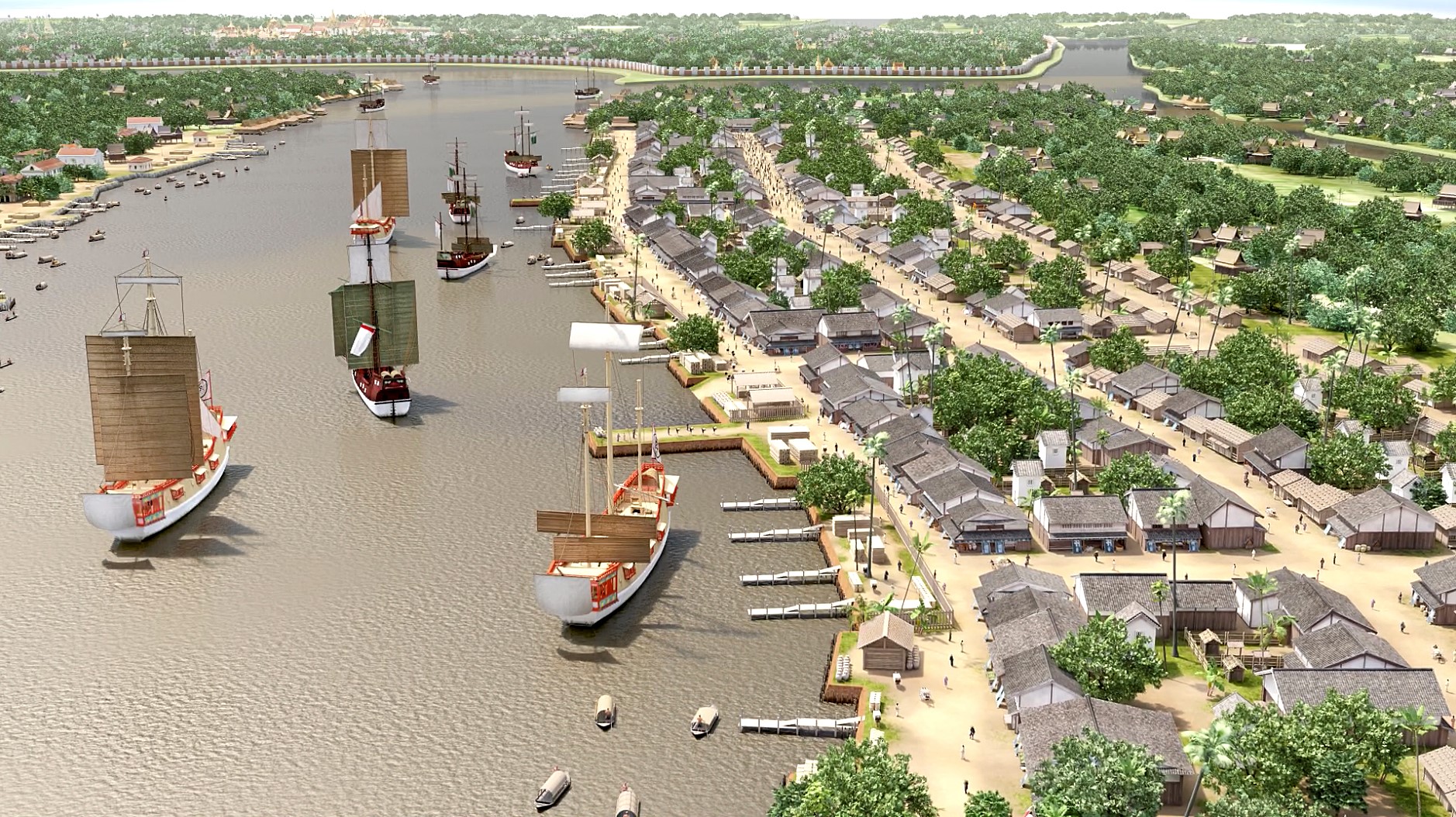
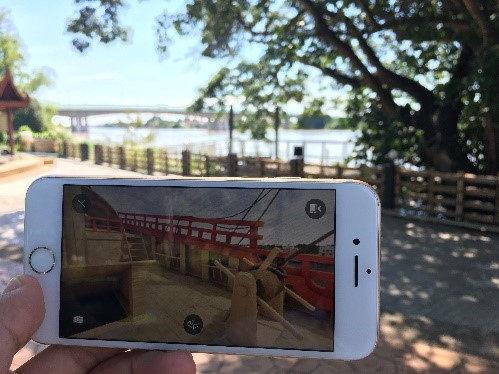
A scene from the content (left).
VR content for the location is displayed when a mobile device is held up at the site (right).
■ About the content
The Japanese Village was created during the golden age of the Ayutthaya Kingdom in the seventeenth century by the Ayutthaya Kingdom and Japanese people as a hub for trade with Japan. This VR content uses high-definition computer graphics to recreate how the streets, port, and trading vessels of the village are assumed to have looked at the time.
・The Street Museum app
The use of GPS enables a 360-degree panoramic virtual reality view of scenery of the Japanese Village to be displayed on a smartphone or tablet at the site itself. Visitors can compare the ruins of the village at the site today with the reconstruction of how it is assumed to have looked in the past and learn more about the site via an audio guide. To enable as many people as possible to enjoy the content, it is available in Japanese, English, and Thai. Paper-based VRscope® viewers developed by Toppan Printing will also be available as souvenirs to enable people to enjoy what they have seen at the actual site even after they have returned home.
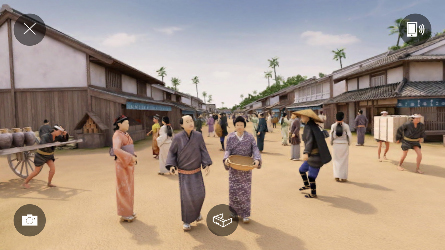
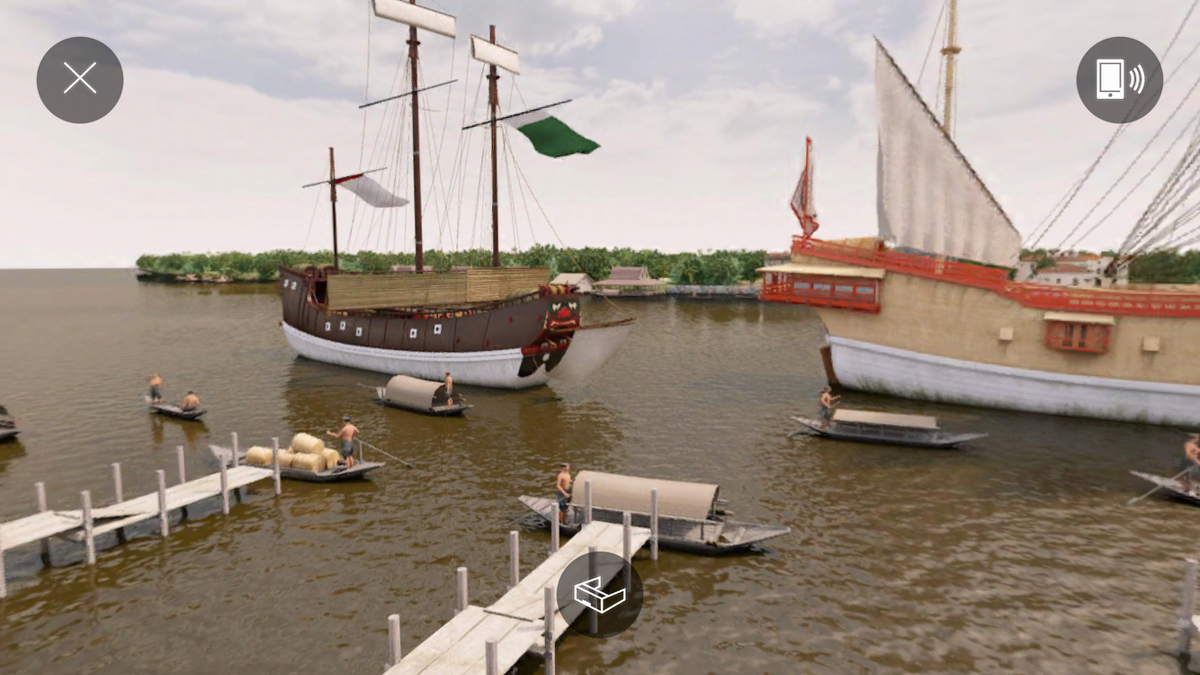
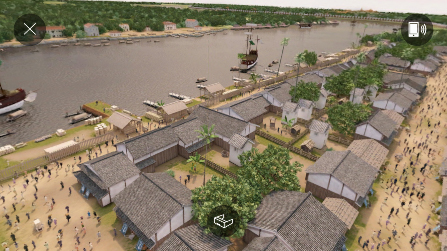
(From left) Scenery from the Japanese Village in the past, Red Seal trading vessels and Siamese boats on the Chao Phraya River, the Japanese Village as seen from above.
・VR video
Video has been produced based on research of valuable historical materials in Japan and Thailand, with supervision from renowned Thai historian Dr. Charnvit Kasetsiri, an expert on Ayutthaya history. With a sense of immersion unique to VR, the video presents the former appearance of the Japanese Village, the historical links between Japan and Thailand forged through trade, and Yamada Nagamasa’s contribution to relations between the two countries.
This is part of the Japanese Village Restoration Project by Virtual Reality undertaken by the Thai-Japanese Association as part of events to mark 130 years of friendship between Thailand and Japan.
*2 Street Museum
Street Museum is a new interactive sightseeing service developed and provided by Toppan Printing. It uses VR technology to enable viewers to seemingly travel in time and freely explore locations as they were in the past or as they might be in the future. Centered on CG and VR technologies developed by Toppan Printing over the years, a one-stop solution is provided from content planning and creation to distribution and the development of viewing applications. A common interface enabling link-ups with other tourism apps is also available based on Toppan Printing’s unique information management and distribution servers and viewing applications. The use of a common platform enables a significant reduction in development costs and enhances user-friendliness. Street Museum already has an extensive track record, having been used for guided tours of Fukuoka Castle, Nagoya Castle (Saga Prefecture), and Sunpu Castle (Shizuoka Prefecture), a tablet device-based IT guidance system for the Sannai-Maruyama site (Aomori Prefecture), and a CG image-based guided tour of Tomioka Silk Mill (Gunma Prefecture).
The Street Museum app brings together content based on historical sites from all over Japan in a single app with a migration function and contains ten pieces of content (as of November 2017), including one focusing on Edo Castle.
* The information in this press release is current as of the date of publication and is subject to change without notice.